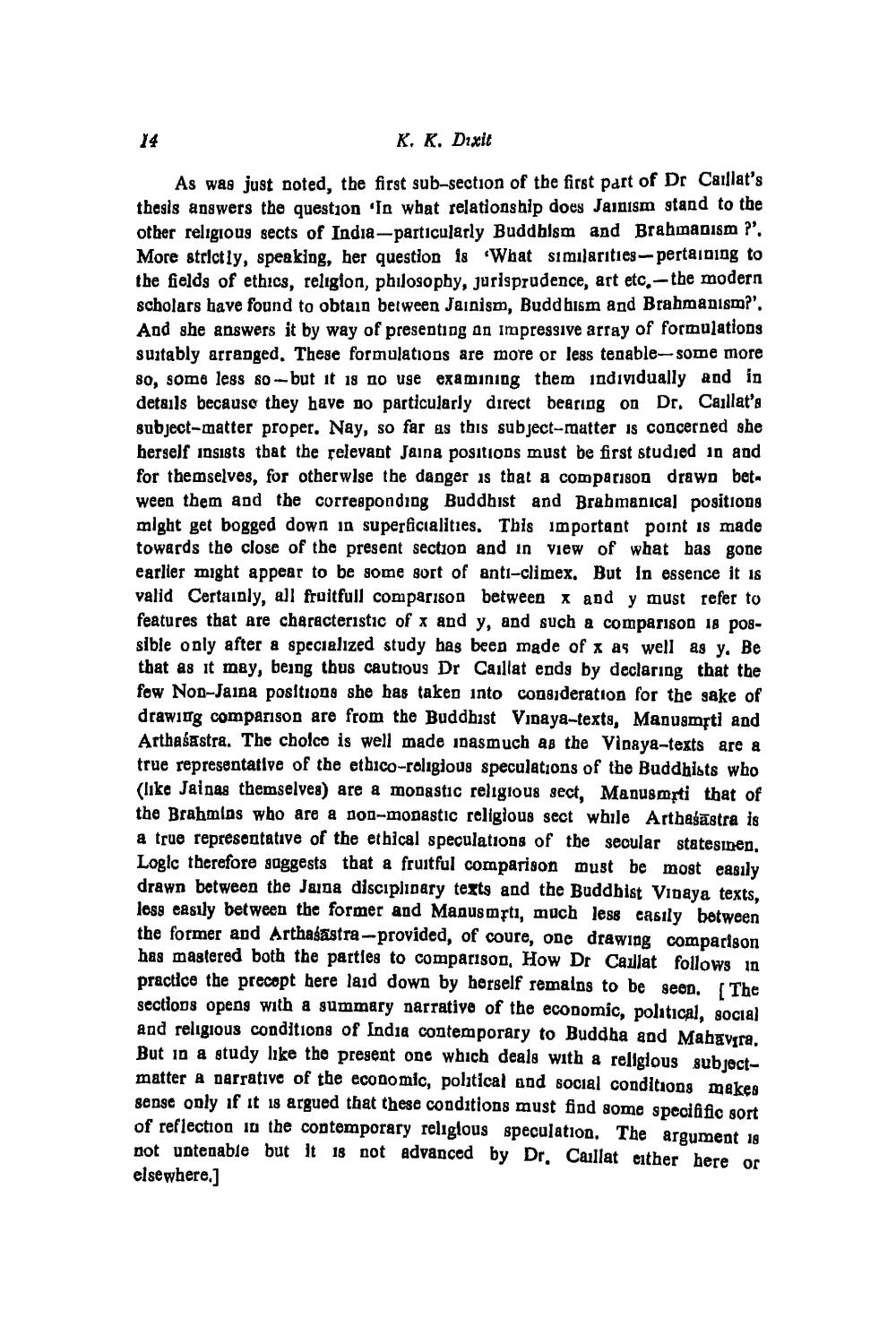________________
K. K. Dixit
As was just noted, the first sub-section of the first part of Dr Caillat's thesis answers the question 'In what relationship does Jainism stand to the other religious sects of India-particularly Buddhism and Brahmanism ?'. More strictly, speaking, her question is 'What similarities-pertaining to the fields of ethics, religion, philosophy, jurisprudence, art etc.-the modern scholars have found to obtain between Jainism, Buddhism and Brahmanism?". And she answers it by way of presenting an impressive array of formulations suitably arranged. These formulations are more or less tenable-some more so, some less so-but it 18 no use examining them individually and in details because they have no particularly direct bearing on Dr. Caillat's subject-matter proper. Nay, so far as this subject-matter is concerned she herself insists that the relevant Jaina positions must be first studied in and for themselves, for otherwise the danger is that a comparison drawn between them and the corresponding Buddhist and Brahmanical positions might get bogged down in superficialities. This important point is made towards the close of the present section and in view of what has gone earlier might appear to be some sort of anti-climex. But In essence it is valid Certainly, all fruitfull comparison between x and y must refer to features that are characteristic of x and y, and such a comparison 18 possible only after a specialized study has been made of x as well as y. Be that as it may, being thus cautious Dr Caillat ends by declaring that the few Non-Jaina positions she has taken into consideration for the sake of drawing comparison are from the Buddhist Vinaya-texts, Manusmrti and Arthasastra. The cholce is well made inasmuch as the Vinaya-texts are a true representative of the ethico-religious speculations of the Buddhists who (like Jainas themselves) are a monastic religious sect, Manusmrti that of the Brahmins who are a non-monastic religious sect while Arthasastra is a true representative of the ethical speculations of the secular statesmen. Logic therefore suggests that a fruitful comparison must be most easily drawn between the Jaina disciplinary texts and the Buddhist Vinaya texts, less easily between the former and Manusmrti, much less easily between the former and Arthasastra-provided, of coure, one drawing comparison has mastered both the parties to comparison, How Dr Caillat follows in practice the precept here laid down by herself remains to be seen. [The sections opens with a summary narrative of the economic, political, social and religious conditions of India contemporary to Buddha and Mahavira, But in a study like the present one which deals with a religious subjectmatter a narrative of the economic, political and social conditions makes sense only if it is argued that these conditions must find some specifific sort of reflection in the contemporary religious speculation. The argument 18 not untenable but it 18 not advanced by Dr. Caillat either here or elsewhere.]
14




